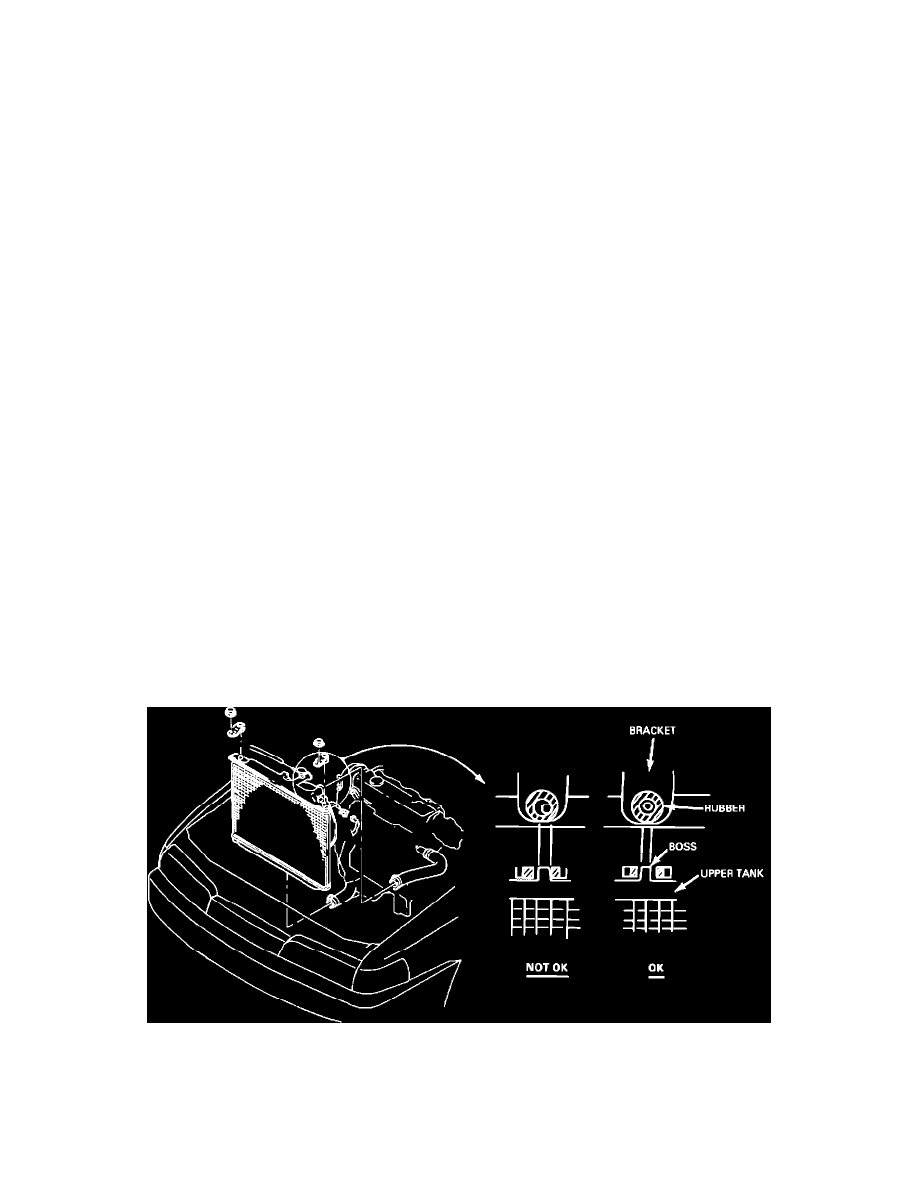Probe V6-182 3.0L (1990)

Idle Speed: All Technical Service Bulletins
Vehicle - Vibration When Idling
^
IDLE - ROUGH - 2.2L EFI & TURBO WITH AUTOMATIC TRANSAXLE
^
NOISE - "WHINE" AT IDLE SPEED - 2.2L EFI & TURBO WITH AUTOMATIC TRANSAXLE
^
VIBRATION - FELT IN STEERING WHEEL AND DRIVER'S SEAT AT IDLE
Article No. 90-23-4
FORD:
1989-90 PROBE
This TSB article is being republished in its entirety to correct the material description of the engine mounts and lower radiator mounts. In addition, a step
has been included to inspect the position of the upper radiator hose clamp tips.
ISSUE:
A vibration felt in the steering wheel and driver's seat or a "whining" noise may occur when the engine idle speed is about 700 RPM. These
conditions happen when the automatic transmission is in the "Drive" range and after the engine has warmed up. They are caused by the
position and isolating qualities of the engine and lower radiator mounts.
ACTION:
Make sure the idle speed is to specification. Install new lower radiator mounts and new number 1 & 2 engine mounts that are made from
softer materials. Refer to the following procedure for service details.
1.
Check to see that idle speed is within the specification.
^
Idle speed: 750 +/- 25 RPM in "P" range.
2.
If the idle speed is not within specification, adjust it to 750 RPM with the test connector grounded. Refer to the 1990 Probe Shop Manual, pages
21-01-6/7 for 2.2L EFI service details and page 24-07-16 for 2.2L Turbo service procedures.
a.
Adjust to the upper limit by turning the idle air screw counterclockwise to approximately 1000 RPM. The higher RPM will allow the ISC
(Idle Speed Control) to control the RPM to be near 775.
b.
Turn the engine off before disconnecting the STI (Self Test Input) ground wire.
c.
Restart the engine and confirm that the ISC is controlling RPM to the upper limit.
3.
Replace the radiator lower mounts with softer rubber ones. Refer to the 1990 Probe Shop Manual, page 27-03-02 for radiator service details.
4.
Make sure the radiator is centered in the radiator upper brackets without friction so that the radiator can move freely as an effective dynamic
damper. If not, adjust the radiator or brackets as follows:
Figure 1
a.
Adjust the position of the upper brackets so that radiator boss is centered, Figure 1.
b.
Adjust the position of the radiator upper hose so that the radiator is not pushed or pulled out of position.
